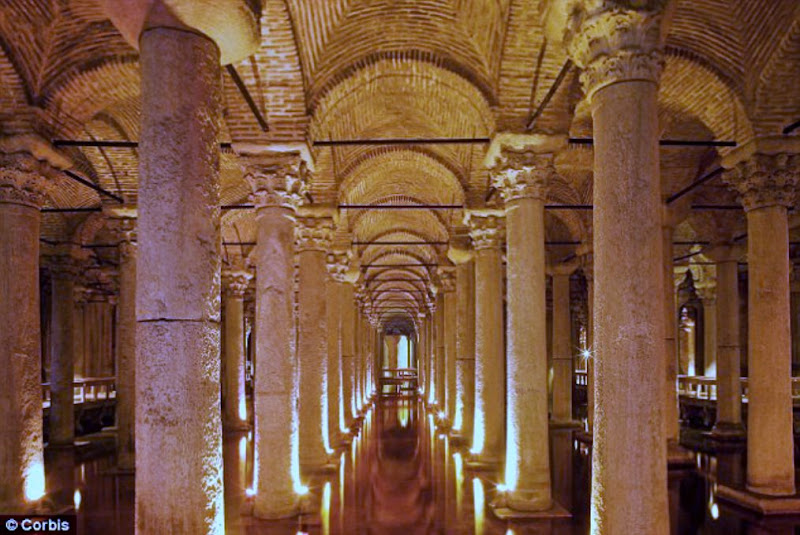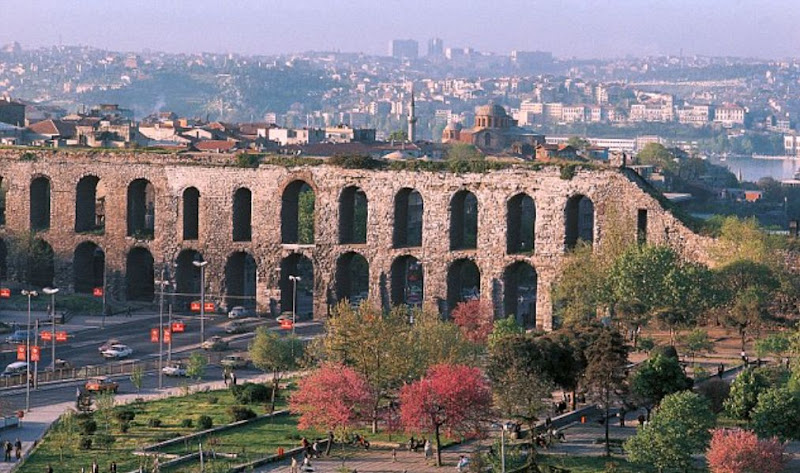The atmospheric and cavernous underground Basilica Cistern, built in the 6th century to provide a fresh water supply for buildings including the Emperor's palace, is a well-known tourist attraction in Istanbul. It seems this structure merely scratches the surface of ancient engineering.

And the marvel will be the focus of a newly opened exhibition in the Turkish city which its organisers hope will bring to life the intricate network of water channels, tunnels and bridges that dates to the fourth century.
It is not known whether the Basilica Cistern is a major feature of the show.
Called 'Waters for a Capital', the exhibition at the RCAC Gallery uses photographs and computer graphics to show how researchers have documented the monuments for the first time.
Visitors will be able to 'fly' through tunnels, emerge out of the other side and zoom over bridges. There will also be plans to explore and videos to watch.

The system carried fresh water around 400km from springs outside the city into the heart of the metropolis created in the name of Roman emperor Constantine in 330AD. Later on, it became the new Rome
Lead archaeologist Professor James Crow, of the University of Edinburgh, mapped the system with water engineers and remote sensing experts from Istanbul Technical University.
Professor Crow, based in the University of Edinburgh's school of history, classics and archaeology, began his research while working at Newcastle University.
'In Istanbul itself there are lots of old cisterns where people stored water. Some of them were very big but people have never really understood how the water got to them and the scale of the enterprise to try and achieve that,' he said.
'This exhibition highlights some exceptional ancient monuments that are part of the fabric of Istanbul, yet still relatively unknown to many of its inhabitants.'
Source: Mail Online [November 09, 2012]